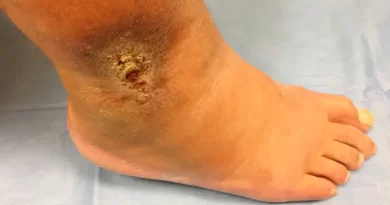Surgery on Blood Thinners
Patients take blood thinners for many reasons. For instance, a history of a blood clot, atrial fibrillation or a mechanical heart valve. So the matter of surgery and blood thinners comes up often. Usually, if a person needs a procedure, then it is possible to make a plan to stop the blood thinner for a few days to allow surgery to be safe. But sometimes a surgeon needs to perform surgery on anticoagulation. There are basically four scenarios when this happens:
- Emergency surgery when the patient is at risk and we cannot stop the blood thinner in time
- Surgery that is so low risk that it is okay to perform surgery on anticoagulation
- Sometimes stopping anticoagulation is very risky for the patient. Then, it might make the most sense to risk bleeding during surgery
- Some types of surgery are done on anticoagulation on purpose. For instance certain types of cardiac surgery. Also, catheter procedures are done on anticoagulation. These are not surgery. But some people still call these procedures “surgical”.
What is the Risk of Surgery on Blood Thinners?
Bleeding can happen in any surgery. When a surgeon performs the operation, they may cut into blood vessels. If they are not able to control the bleeding, it can result in blood loss and harm to the patient. In fact, if bleeding happens then overall patients are worse off. So avoiding bleeding is a major concern any surgeon has. If a patient is taking a blood thinner, then the risk of bleeding is higher. It is that simple. But life is complicated. In fact, blood clots after surgery are a major problem. Striking a balance between the risk of bleeding and the risk of clotting can be hard.
Bleeding Risk is Different in Different Types of Surgery
There is more risk for bleeding with some surgeries compared to others. Dentists can actually perform most dental procedures safely, even in people who are taking blood thinners. Often they refuse, though. But if you are not the one performing the procedure, you cannot always know how much risk is involved. For example, two patients may undergo a radical prostatectomy. But in one patient the procedure went well, while in the other, there were bleeding arteries and the risk for bleeding after the procedure is higher.
Still, to help us assess risk, there are tables that summarize the risk of bleeding for many types of surgical procedures. For instance, check out Table 9 here or Table 2 here. You can imagine, that if a procedure is risky even without anticoagulation, it is probably that much more risky on anticoagulation.
In Surgery, Like Real-Estate, Location is Key
The location of bleeding is also important. Even a small bleed in the brain, to the eye or in the spine can be devastating. Also, it is easier to stop some bleeds compared to others. For example, it is easy to put pressure on a bleeding cut in the skin to get it to stop. But stopping an internal bleed in the abdomen is a totally different matter.
Patient Factors are Hard to Assess
Some patients have a greater tendency to bleed than others. But it can be hard to know how has a higher bleeding risk and who does not. Of course, this is less relevant for patients who are taking anticoagulation.
Testing for Anticoagulation before Surgery
So we have established that performing surgery in someone who is taking a blood thinner is risky. But how do we know if a blood thinner is still present in the bloodstream? Fortunately, there are tests for that. Each blood thinner affects a different type of test. So we can choose the correct test to identify the presence and level of the blood thinner:
| Blood thinner | Test |
| Coumadin / Warfarin | INR |
| Rivaroxaban (Xarelto) and Apixaban (Eliquis) | anti-Xa |
| Dabigatran | PTT and thrombin time |
| Heparin | PTT |
| Low molecular weight heparin (e.g., enoxaparin) | anti-Xa |
Reversing Blood Thinners
If a patient needs emergency surgery, sometimes surgery on blood thinners is the only option they have. But sometimes there is time to reverse the blood thinner. Reversing the blood thinner means giving the patient a medication that will stop the effect of the blood thinner. If there is time to reverse the anticoagulation, then surgery is safer.
A Word about Antiplatelet Agents and Surgery
Anticoagulation is not the same as antiplatelet agents. Medications such as aspirin, clopidogrel (Plavix) and ticagrelor (Brilinta) inhibit the platelets in the bloodstream. These medications can also increase the risk of bleeding during and after surgery. The guidance for these medications is overall similar to that of anticoagulation. Basically, you should stop them if there is time and if it is safe to do so. But knowing when it is safe to stop these medicines can be challenging. For instance, many of these medicines prevent severe heart problems. Stopping them, even for a short period of time, can be dangerous.



